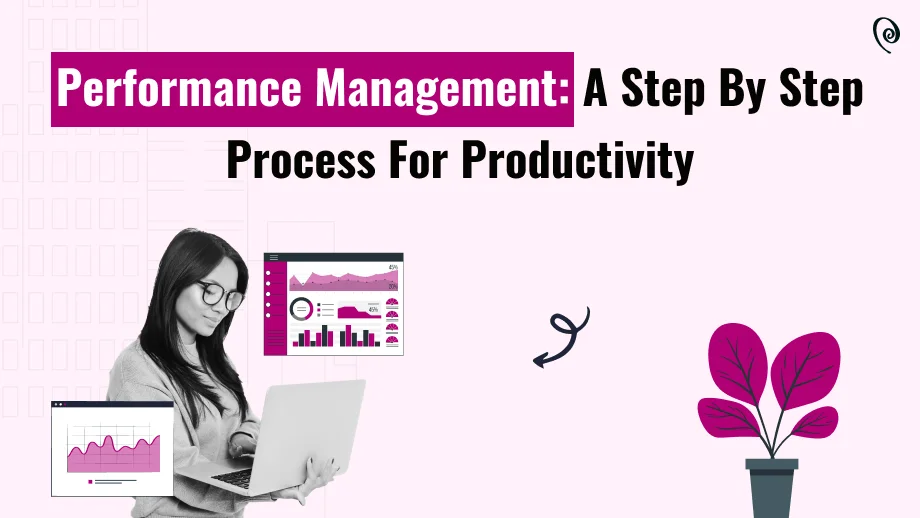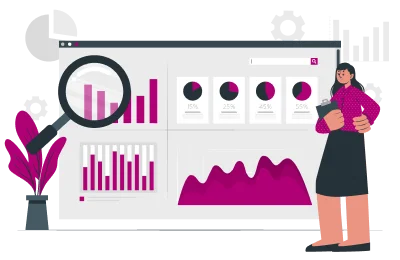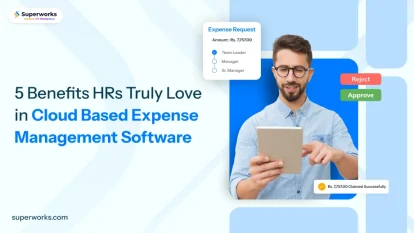Grab a chance to avail 6 Months of Performance Module for FREE
Book a free demo session & learn more about it!
-
Will customized solution for your needs
-
Empowering users with user-friendly features
-
Driving success across diverse industries, everywhere.
Grab a chance to avail 6 Months of Performance Module for FREE
Book a free demo session & learn more about it!
Superworks
Modern HR Workplace
Your Partner in the entire Employee Life Cycle
From recruitment to retirement manage every stage of employee lifecycle with ease.


Seamless onboarding & offboarding
Automated compliance & payroll
Track performance & engagement
Performance Management: A Step By Step Process For Productivity
- Superworks
- 5 min read
- November 7, 2023

In today’s fast-paced business world, performance management has become a crucial aspect of ensuring a company’s growth and success. According to a 2019 survey by Gartner, more than 80% of organizations are considering making significant changes to their performance management process.
If you’re looking to be part of a performance management system that evaluates employees regularly to keep your company on the path to success, this blog is here to provide you with a simple yet comprehensive overview of performance management.
We’ll explore what performance management is, the steps involved in the process, the two types of effective performance management, and best practices for implementing management performance successfully.
What Is Performance Management?

It is a structured process designed to assess and improve employees’ work performance, aligning it with business objectives.
The primary goal of a performance management system is to track and enhance employees’ skills, ensuring they can perform their job duties effectively.
Several elements are involved in the process of performance management, including
-
Tracking projects and tasks.
-
Giving performance appraisal.
-
Utilizing key performance indicators (KPIs).
-
Employee management dashboards.
-
Peer review and 360 degree feedback.
Performance management software, often referred to as performance appraisal software, focuses on individual goals and self-improvement while considering the organization’s strategic objectives.
It is not only essential for the organization’s success but also for individual growth, as it can lead to opportunities such as bonuses, promotions, or even dismissals based on performance.
What Is An Effective Performance Management?
It can be approached from two main perspectives: the behavioral approach and the results-oriented approach.
Behavioral Approach:
This approach assesses how employees work together as a team and evaluates individual behaviors and efforts in comparison to their peers and the company. It involves identifying current behaviors, communicating desired future behaviors, and providing training or coaching to bridge any gaps in behavior.
Results-Oriented Approach:
This approach is ideal for roles with quantifiable performance metrics, such as meeting sales quotas, tracking billable hours, or achieving specific call statistics. The focus here is on the quality and quantity of the end results.
Now that we understand the basics of performance management, let’s delve into the five best practices for implementing an effective performance management process.

Ready to boost productivity? – Check Superworks modules
Unlock your team’s full potential with comprehensive guide to Performance Management & software.
Don’t miss out on the key strategies for achieving outstanding results!
Steps Of The Performance Management Process
Managing your employees effectively is essential for productivity and success, and the performance management process plays a vital role in achieving this. Here are the five key steps to handling the performance management process:
Plan:
The first step involves setting clear employee goals and communicating them effectively. You can include these goals in job descriptions to attract high-quality candidates, and you may evaluate goal completion as a percentage based on your organization’s predictive analytics for human resources performance management process.
Monitor:
In this phase, you keep a close eye on employee performance toward their goals. Utilizing performance management software allows you to track your team’s progress in real-time and make necessary adjustments.
Develop:
Using the data collected during monitoring, you can identify areas where employees can improve and provide them with opportunities for growth. This might involve offering training, coaching, or adjusting their development path.
Rate:
Periodic performance ratings are crucial for assessing employee performance and implementing necessary changes. Ratings can be provided by both peers and managers, contributing to 360 degree feedback.
Reward:
Recognizing and rewarding good performance is a vital component of the performance management process. It can be as simple as expressing gratitude, offering social recognition, or implementing a comprehensive employee rewards program.
In addition to these five steps, let’s explore some best practices for effective performance management.
Read More: How Employee Performance Management Helps You Foster A Culture Of Growth?
What Are The Best Practices For Performance Management?

Re-evaluate Goals Regularly: In today’s rapidly changing business environment, it’s essential to regularly assess job roles and realign them as needed to save costs and support functional responsibilities. Ensure that goals are specific, measurable, actionable, relevant, and time-bound (SMART) to avoid performance issues.
Utilize Objectives and Key Results (OKRs):
Implement the “objective and key results” methodology to set, communicate, and track organizational goals effectively. This approach enhances accountability and provides a quantitative measure of achievable goals.
Have Performance Conversations:
Regular and timely feedback is crucial for improving employee performance throughout the year. Effective communication can significantly impact productivity and goal achievement.
Standardize and Automate Processes:
To maintain fairness and efficiency, ensure that all employees follow the same performance management process and are held to the same standard. Automation through performance management software can streamline performance reviews and make the process more manageable.
Conclusion
Performance management is a vital aspect of modern business process management, and its impact on employee motivation and productivity cannot be overstated.
By following best practices, such as re-evaluating goals regularly, setting SMART objectives, utilizing OKRs, fostering performance conversations, and standardizing processes, you can create a performance management system that drives growth and success for your organization.
In the end, open and transparent communication remains key to effective employee management, regardless of your physical location. Embracing performance management software with Superworks – Super Project kind of project and task tracking software and feedback systems can contribute significantly to your company’s development and help you achieve your goals. Moreover, you can integrate these all modules with HRMS software India.




